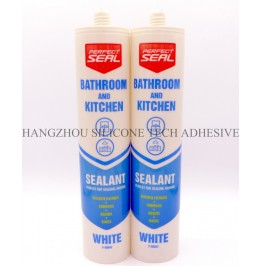Avoiding Water Exposure During Sealant Curing Periods
Proper curing is essential for sealants to achieve optimal adhesion, flexibility, and waterproofing properties. Exposure to water before full curing can disrupt chemical processes, leading to weakened bonds, discoloration, or premature failure. Understanding curing timelines and environmental factors ensures long-lasting performance in wet environments like bathrooms.

Sealant curing times vary based on formulation, with most requiring 24 to 72 hours to reach initial tack-free strength. However, full curing—where the material achieves maximum durability and chemical resistance—can take up to 7 days. Manufacturers typically provide guidelines specifying "dry to touch" and "fully cured" timelines, which depend on ambient conditions.
For example, silicone-based sealants may feel dry within hours but require 48–72 hours for complete curing. Acrylic sealants, while faster-drying, often need 24–48 hours to resist water exposure. Always refer to the product’s technical datasheet for precise timelines, as skipping this step risks compromising the sealant’s integrity.
Environmental factors like temperature and humidity also influence curing rates. Cold temperatures slow chemical reactions, extending curing times, while high humidity can trap moisture beneath the sealant, delaying adhesion. Adjusting schedules based on these variables prevents premature water contact.
The first 24–48 hours after application are the most vulnerable period for sealants. During this time, the material undergoes surface drying and initial cross-linking. Water exposure at this stage can cause washing, bubbling, or a tacky finish, reducing adhesion strength.
Even after the surface appears dry, the sealant’s interior may still be curing. Light splashes or condensation during this phase can penetrate the material, leading to internal weaknesses. Avoid showering, running taps, or cleaning the area until the full curing period elapses.
For joints in high-moisture zones like shower enclosures or sink backsplashes, extend caution beyond the initial curing window. These areas experience constant water pressure, so allowing 7 days for full curing ensures the sealant can withstand daily use without degrading.
Bathrooms and kitchens pose unique challenges due to frequent water use. To protect curing sealants, implement temporary barriers such as plastic sheeting or waterproof tape over freshly applied joints. These measures block direct water contact while allowing airflow to support curing.
In multi-use facilities, schedule sealant applications during low-traffic periods or off-hours. Communicate with household members or staff to avoid wetting the area until curing is complete. For urgent repairs, prioritize quick-curing formulations approved for short-term water exposure, though these may sacrifice long-term durability.
If accidental water contact occurs during curing, gently blot excess moisture with a dry cloth and allow the area to air-dry completely. Avoid wiping or scrubbing, as this can disrupt the sealant’s surface. Monitor the joint for signs of failure, such as cracking or peeling, and reapply if necessary.
Before resuming normal water use, verify the sealant’s curing status through simple tests. Press a fingernail lightly into an inconspicuous area; if it leaves an indentation, the sealant is not fully cured. Alternatively, run a gloved finger along the joint—a smooth, firm surface indicates readiness, while tackiness suggests further curing is needed.
For critical applications, conduct a water resistance test by sprinkling a small amount of water onto the sealant and observing for 30 minutes. If the water beads without penetrating, the joint is likely cured. Persistent absorption or discoloration signals inadequate curing, requiring additional drying time.
By adhering to manufacturer guidelines, protecting vulnerable joints, and verifying curing completeness, installers ensure sealants perform as intended. Avoiding premature water exposure safeguards adhesion, prevents mold growth, and extends the lifespan of waterproofing systems.
Copyright 2019 by Hangzhou Silicone Tech Adhesive Co., Ltd. All rights reserved.
Bathroom Sealant | Acrylic Sealant | Dow Corning 795 | Aquarium Sealant | Dow Corning 732 | Clear Silicone Sealant | Polysulfide Sealant | Glazing Sealant | Mirror Sealant | IG Sealant
Powered by Onepound